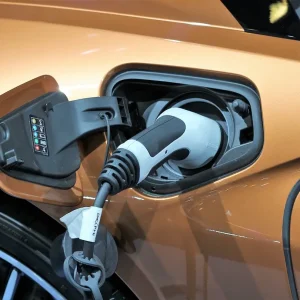We’re told that a whole-life cost model is the definitive way to work out and plan a fleet’s operating costs. They account for all expenditure based on known quantities and can even be tailored to include the past, present and likely future costs of a particular business.
So why aren’t fleet operators as keen to buy into them as they supposedly should be? Listen to the leasing companies or anyone else who knows about whole-life costs and you’ll likely hear it’s a no-brainer, but many of the same people say it’s often difficult to convince fleets to buy into the idea, despite all the plus points.
“It really depends who’s involved in the decision making process,” says Matt Sutherland, COO of Alphabet and a member of the BVRLA’s leasing and fleet management committee. “You may advise using whole-life costs, but essentially it depends on who you’re dealing with at the other end.
“Procurement or finance tend to really buy into it; fleet managers predominantly do. But then if you look at the other main stakeholders in company car choice lists and benefits, it’s HR.
They will really be balancing those costs against being an attractive employer, and if they’ve got a free, open-car choice policy, are they really going to restrict it down to the most cost-effective vehicles?
“I think there are a lot of cars that make sense from a whole-life cost point of view, but they may have the wrong badge on them.”
“There’s probably a couple of reasons,” adds Mark Jowsey, manufacturer liaison director at KeeResources. “It’s quite easy to set your car policy using contract hire rental as a top and bottom parameter. I think it’s quite wrong, but it’s just an easy way.
“It isn’t a reflection of operating cost and certainly it isn’t a reflection of vehicles with good whole-life cost because a cheap rental, as opposed to competitive rental, doesn’t give you any clue as to why that is. So you might think something’s affordable, but maybe it’s not that great on fuel consumption; maybe it’s a bit pricey on maintenance; less likely, but possibly it’s a bit expensive on insurance.
“The second [reason] is that those fleets who use contract hire, dependent on their fleet size, don’t always have a traditional fleet manager running their cars. In some cases, they may be very competent administrators who provide a good interface with the contract hire company, but maybe not necessarily the people driving the policy decisions relating to car provision.”
One of the obstacles facing whole-life cost models – and another reason that feeds into the simplicity of the lease-rate method – is their complexity. It can be difficult to explain them to businesses unfamiliar with the concept, and equally tricky to feed that down to drivers.
“In truth, it’s complicated,” says Matthew Walters, Leaseplan’s head of consultancy services. “When I joined Leaseplan in 2005, companies were still basing their policies on P11D values, which doesn’t reflect the actual cost the business is paying and is now regarded very widely as not the right thing to do.
“We moved into a situation where companies did it on a rental basis, then a rental including recoverable VAT. All of that’s really quite easy to do because it’s what you’re invoiced taking into account the VAT recovery. So it’s an easy figure to get to, communicate and use.”
He continues: “Whether it’s a simple or a complex model, it’s quite difficult to communicate to your employees what it is you’re going to do, because the first thing that’s going to happen when you implement a whole-life cost model is your grade boundaries or your policy limits will go up.
“So your £350 vehicle your employee is currently driving on his £350 grade limit will suddenly become a £500 grade limit, for example. Explaining that and demonstrating it to your drivers is quite complex.”
In order to foster uptake, the leasing industry is resorting to different methods of encouraging fleets towards whole-life cost policies. “What we can do from an industry perspective is try and bring both HR and finance to the decision table at the same time,” says Alphabet’s Sutherland. “I think we really need to try and push that because without it, you are going to get these decisions made in isolation. That’s a big thing for the industry.”
Leaseplan’s Walters claims it’s best to start by drip-feeding small elements into the overall cost model over time: “What we’ve always encouraged is to take baby steps and say ‘include the fuel benefit’ or ‘just include the leasing disallowance and then fuel’. Then [you can add] other areas of whole-life cost you might want to improve – introduce environmental measures and levers.
“Start from a very simple process of finding out what a customer is really looking to drive [with] policy reform. Any customer will tell you they want low CO2s – and when you actually put some of the cost of things like EVs in front of them and say ‘this is what that would mean’ it can be quite prohibitive.
“So then you say ‘is it about profit, is it about a driver to reduce costs?’ – and you can’t have all three. So where is your business priority and where do you want to go?
“It’s quite complicated to introduce, in truth. But it’s the right behaviour.”
Whole-life costs: the case in favour
As an advocate of whole-life cost models, and someone who is not an employee of a leasing firm, Mark Jowsey, the manufacturer liaison director at automotive data experts KeeResources, tells BusinessCar that between 35% and 40% of the operating cost is likely to be outside the monthly rental.
“There’s a great deal of cost attached to running cars over whatever term and mileage, and there’s a great difference in the operating costs of different products. Often, that may mean something is more affordable than you would have expected, [but] it is very, very difficult to make a properly informed decision unless you take advantage of the level of data that’s available.
“There’s an element of responsibility here. I think it’s too easy to base your company car decisions on a hotly discounted acquisition cost or a really keen monthly rental.”
He adds that such a policy also has a stabilising effect on car choice lists as well as costs: “When you’re setting a policy you have to have some degree of averaging, and whole-life costs can take away some of the volatility in rentals. [It helps] to maintain a more stable policy so you don’t get too much ‘Fred can have this car today but Peter can’t have it next month, yet Harry can choose it again the following month’ – not because [the cost has] gone up but because of the volatility in the rental. You really need to consider as level a playing field as possible within your company car choice list and sometimes that’s difficult to achieve.
“You can also adjust certain operating costs based on average or typical wear rates for maintenance or fuel consumption. If you think that most of your drivers don’t get the official combined consumption, which is probably what most people would expect, then you can factor your fuel costs to reflect that if truly budgeting to that degree is important in the overall scale.”
Whole-life costs: the case against
Leasing companies may be behind them but not everyone is convinced that whole-life cost policies are the way to go. Chairman of the Fleet Industry Advisory Group, Geoffrey Bray, believes such models don’t account for what he describes as the single biggest influence on expenditure: the driver.
“When somebody says ‘I’m going to fix your costs’ you should ask ‘how do you know what quality of drivers I’ve got?’ and ‘how do you know where I’m operating my vehicles?’ There is no such thing [as fixed costs]. It’s a Shangri-La which doesn’t exist and that’s why, historically – and it still happens – anything outside of a contracted figure will come back as rechargeables and extras.”
Bray claims a package bundling costs into one figure is neither practical, nor realistic, and operators with true fleet expertise will see through it.
“A switched-on individual will be dissecting the costs of running a vehicle, not putting them all in one place. In other words, you can fund the car, you can maintain it, you can have the crash management services – all of these things you can separate. And by unbundling it from what would be a whole-life cost figure, you can end up saving money.
“This is where you want your fleet manager. He’ll dissect these things and [ask] what a whole-life cost is based on. Is it based on some spurious figures the manufacturers threw out? Do you base it on [official] fuel consumption? Then if your people are heavy-footed and it’s 15% or 20% more because of the way the cars are being driven – you can’t fix it. It’s a nonsense.
“I would say to a company ‘what are your costs now?’ Analyse what you’ve done, what you’ve got and where your expenditure has gone. It shouldn’t be difficult to do and if it is, it means you’re not managing properly – and if you haven’t, use a management company, not a leasing company, to help you to understand, dissect, then try and put something back together.
“What you really want is a process in place that’s continually improving driving standards; and that, ultimately, will cut down your costs.”





